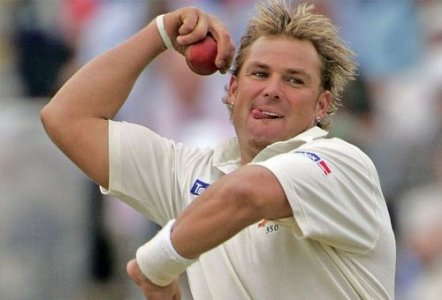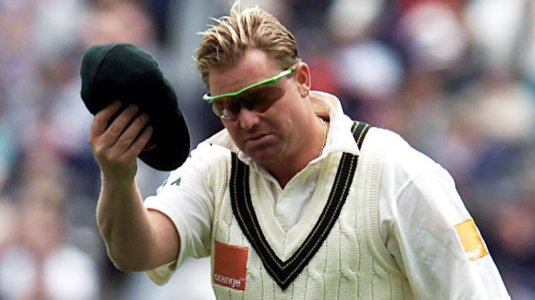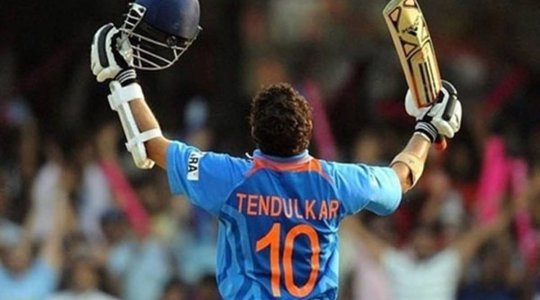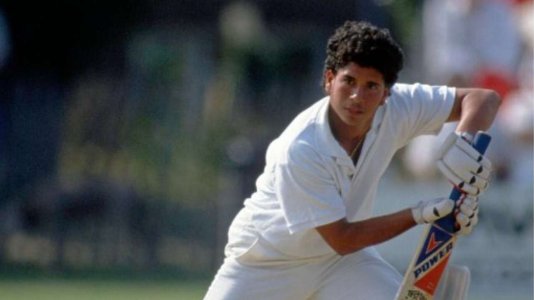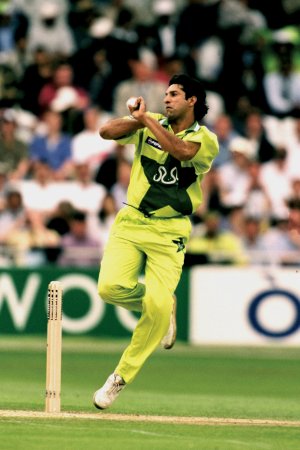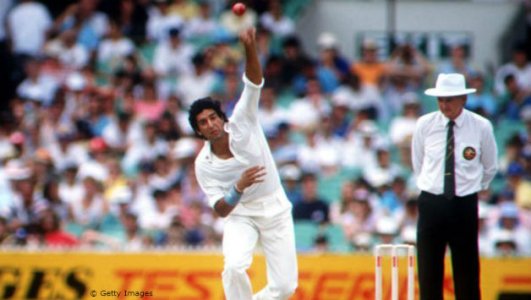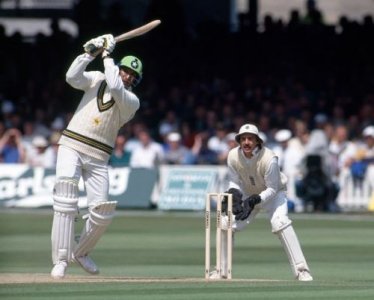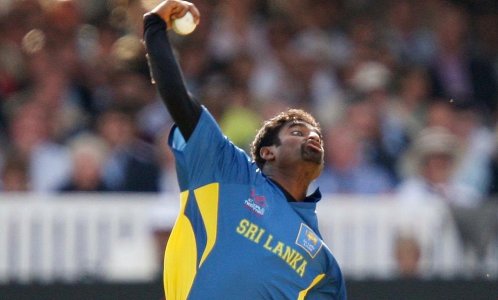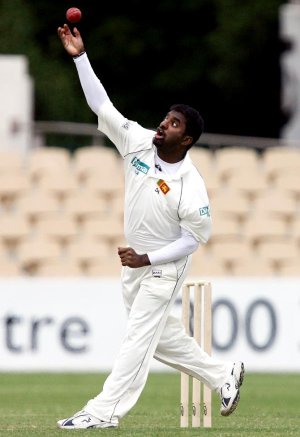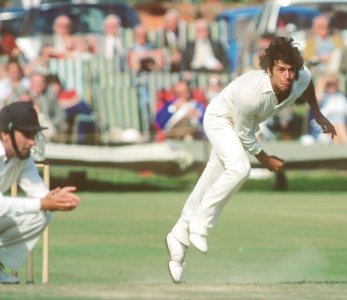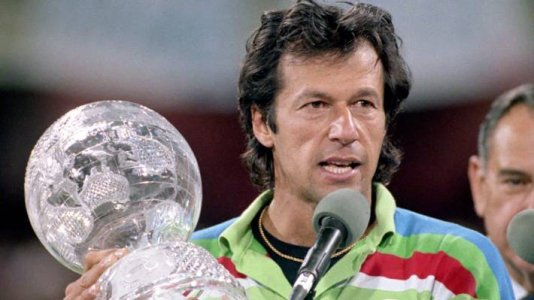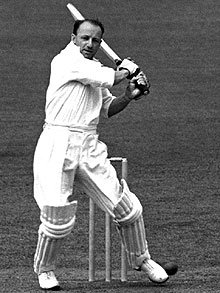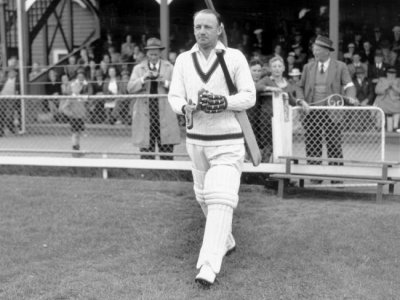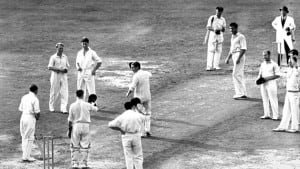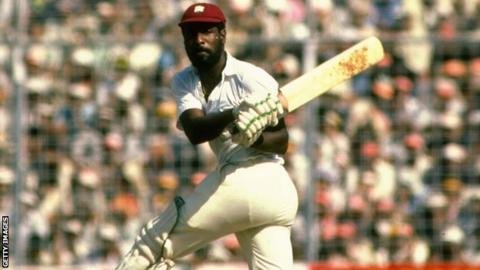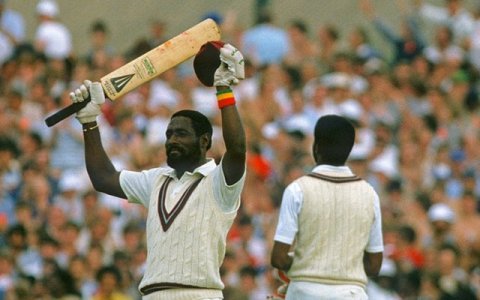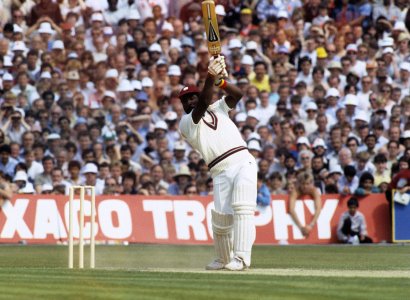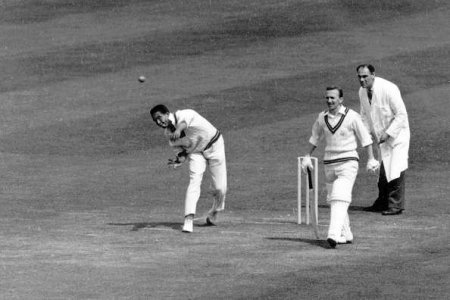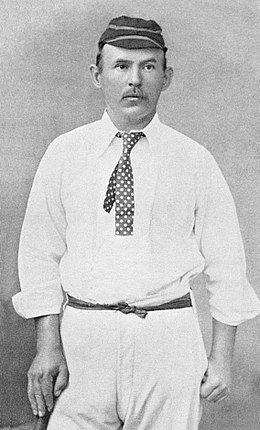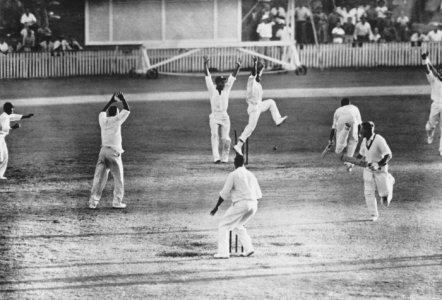-
Contact the PP Team
Connect with us
Navigation
Install the app
How to install the app on iOS
Follow along with the video below to see how to install our site as a web app on your home screen.
Note: This feature may not be available in some browsers.
More options
Style variation
You are using an out of date browser. It may not display this or other websites correctly.
You should upgrade or use an alternative browser.
You should upgrade or use an alternative browser.
The Greatest Cricketers Ever - Top 50
- Thread starter Asifnow
- Start date
Ab Fan
Senior Test Player
- Joined
- Sep 24, 2015
- Runs
- 28,451
Kumble doesn't make it through my eligibility criteria/
But what about other names like Allan Donald, Dale Steyn, Greg Chappell, Joel Garner, Rahul Dravid and Andy Roberts?
Were they missed out or you felt they were less deserving compared to some other names mentioned in the top 50?
Thunderbolt14
ODI Debutant
- Joined
- Jan 2, 2020
- Runs
- 8,700
- Post of the Week
- 2
Steyn is a legit top 5 fast bowler ever. Brilliant in a batting era
Agreed. Especially if we’re talking tests.
You probably got the 50 cricketer names right but the order in which you are listing them is just weird. Some of the rankings make no sense at all.
However, it's your personal opinion so I respect that.
Decent effort all round, makes for an interesting read
No personal opinions from me. Otherwise I'd rank a tonne of players much higher.
Agreed. Especially if we’re talking tests.
Akram, Younis, McGrath, Akhtar and Lee in recent times all had better all format careers, historically add in Marshall, Holding, Trueman and Steyn isnt quite top 5 all time.
big_gamer007
T20I Debutant
- Joined
- Mar 25, 2016
- Runs
- 8,452
No personal opinions from me. Otherwise I'd rank a tonne of players much higher.
Akram, Younis, McGrath, Akhtar and Lee in recent times all had better all format careers, historically add in Marshall, Holding, Trueman and Steyn isnt quite top 5 all time.
Is it's not based on your personal opinion then how are you ranking them?
Some of the positions don't make any sense.
Thunderbolt14
ODI Debutant
- Joined
- Jan 2, 2020
- Runs
- 8,700
- Post of the Week
- 2
No personal opinions from me. Otherwise I'd rank a tonne of players much higher.
Akram, Younis, McGrath, Akhtar and Lee in recent times all had better all format careers, historically add in Marshall, Holding, Trueman and Steyn isnt quite top 5 all time.
Definitely not Younis, Akhtar, and Lee. Steyn ranks higher for me in Tests. All format is debatable
Thunderbolt14
ODI Debutant
- Joined
- Jan 2, 2020
- Runs
- 8,700
- Post of the Week
- 2
Akhtar is understandable since you can reserve one spot for the fastest ever. But I don’t think Lee is anywhere near Steyn. Younis is rated highly as a Pakistani but Steyn has eclipsed Younis internationally.
That being said, I love your writeups. Obviously it’s your opinion and I’m excited to see the remainder
That being said, I love your writeups. Obviously it’s your opinion and I’m excited to see the remainder
Excited for top 10. Dale Steyn must be there, laughable to exclude him and include Anderson, Lee and Shoaib in the list.
Dale Steyn not only deserves to be in list but higher ahead of Shaun Pollock and Waqar Younis. Curtly Ambrose should also be in top 20.
Dale Steyn not only deserves to be in list but higher ahead of Shaun Pollock and Waqar Younis. Curtly Ambrose should also be in top 20.
Robert
Test Star
- Joined
- Nov 4, 2007
- Runs
- 37,604
- Post of the Week
- 1
Lee very mediocre tests, steyn less mediocre ODI. tests > odi. Therefore Steyn > Lee
It is okay if you make a mistake, just admit it, but you are the only person who thinks Lee > Steyn
I would put Lee at about Anderson and Broad level and far behind Steyn.
No. 8 - Shane Warne
Mr. Hollywood as he was known for some time, is the greatest leg spinner ever. As much as Abdul Qadir brought the art back to life, Shane Warne raised the bar. At one stage in his career, at his absolute peak circa 1999-2003, he may well have been the best bowler on the planet. That is remarkable considering he was facing stiff competition from the likes of Wasim, Waqar, Donald, Ambrose, Walsh and of course, his great spin rival, Murali.
Warne elevated the art of spin, not through outrageous turn (yes he had his moments) or through mystery new deliveries, although he claimed before every Ashes series that he had created a new delivery (he never did), but through immaculate control. His stock delivery was a steady, accurate and consistent leg spinner. His googly was his most potent weapon of choice. Neither was outrageous; both were more effective than just about anything else. Former England captain Nasser Hussain once stated that Warne would beat you without the spin, because he made you think about it too much. I am sure many batsmen felt the same way.
It would be remiss, in this write up, to ignore or avoid Warne's failings and controversies. Australians often state he is the greatest captain he never had, sadly it was the right choice. At times he took the hostile environment his team loved to create a bit too far, he lived a bit too much and there was, of course, the drug scandal of 2003. Warne, in his pomp as the supreme master would go onto miss that year's world cup. It was sad that the sports greatest tournament never got to see a truly primed Warne - in 1996 and 1999 he was great but not yet the greatest. It was not meant to be....and yet what there was, in both tests and ODIs was so remarkable already.
Where do we begin with his great work? The 7-52 against a still mighty West Indies? In a match where the great test side looked to be on course for a win, Warne took the ball in the final innings and worked his magic. There is the brilliant 11 wickets against Pakistan, in the neutral test of 2002, where he showcased he had enough spin, bounce and turn even against great players of spin like Younis Khan. What truly sticks in the mind his when he would drag Australia back from the dead, time and time again, none more so in the 1996 World Cup semi against the old enemy, West Indies. The Windies needed 42 runs to win, 8 wickets in hand...in steps Warne with 4-36. Game over.
It would be a fairytale end for a not quite so fairy tale cricketer, bamboozling England for revenge in the 2007 Ashes and sailing off into the sun set. Bleached blonde hair and all.
Mr. Hollywood as he was known for some time, is the greatest leg spinner ever. As much as Abdul Qadir brought the art back to life, Shane Warne raised the bar. At one stage in his career, at his absolute peak circa 1999-2003, he may well have been the best bowler on the planet. That is remarkable considering he was facing stiff competition from the likes of Wasim, Waqar, Donald, Ambrose, Walsh and of course, his great spin rival, Murali.
Warne elevated the art of spin, not through outrageous turn (yes he had his moments) or through mystery new deliveries, although he claimed before every Ashes series that he had created a new delivery (he never did), but through immaculate control. His stock delivery was a steady, accurate and consistent leg spinner. His googly was his most potent weapon of choice. Neither was outrageous; both were more effective than just about anything else. Former England captain Nasser Hussain once stated that Warne would beat you without the spin, because he made you think about it too much. I am sure many batsmen felt the same way.
It would be remiss, in this write up, to ignore or avoid Warne's failings and controversies. Australians often state he is the greatest captain he never had, sadly it was the right choice. At times he took the hostile environment his team loved to create a bit too far, he lived a bit too much and there was, of course, the drug scandal of 2003. Warne, in his pomp as the supreme master would go onto miss that year's world cup. It was sad that the sports greatest tournament never got to see a truly primed Warne - in 1996 and 1999 he was great but not yet the greatest. It was not meant to be....and yet what there was, in both tests and ODIs was so remarkable already.
Where do we begin with his great work? The 7-52 against a still mighty West Indies? In a match where the great test side looked to be on course for a win, Warne took the ball in the final innings and worked his magic. There is the brilliant 11 wickets against Pakistan, in the neutral test of 2002, where he showcased he had enough spin, bounce and turn even against great players of spin like Younis Khan. What truly sticks in the mind his when he would drag Australia back from the dead, time and time again, none more so in the 1996 World Cup semi against the old enemy, West Indies. The Windies needed 42 runs to win, 8 wickets in hand...in steps Warne with 4-36. Game over.
It would be a fairytale end for a not quite so fairy tale cricketer, bamboozling England for revenge in the 2007 Ashes and sailing off into the sun set. Bleached blonde hair and all.
Bhaijaan
Hall of Famer
- Joined
- Jan 10, 2011
- Runs
- 69,077
- Post of the Week
- 1
Mr. Hollywood as he was known for some time, is the greatest leg spinner ever. As much as Abdul Qadir brought the art back to life, Shane Warne raised the bar. At one stage in his career, at his absolute peak circa 1999-2003, he may well have been the best bowler on the planet. That is remarkable considering he was facing stiff competition from the likes of Wasim, Waqar, Donald, Ambrose, Walsh and of course, his great spin rival, Murali.
Warne elevated the art of spin, not through outrageous turn (yes he had his moments) or through mystery new deliveries, although he claimed before every Ashes series that he had created a new delivery (he never did), but through immaculate control. His stock delivery was a steady, accurate and consistent leg spinner. His googly was his most potent weapon of choice. Neither was outrageous; both were more effective than just about anything else. Former England captain Nasser Hussain once stated that Warne would beat you without the spin, because he made you think about it too much. I am sure many batsmen felt the same way.
It would be remiss, in this write up, to ignore or avoid Warne's failings and controversies. Australians often state he is the greatest captain he never had, sadly it was the right choice. At times he took the hostile environment his team loved to create a bit too far, he lived a bit too much and there was, of course, the drug scandal of 2003. Warne, in his pomp as the supreme master would go onto miss that year's world cup. It was sad that the sports greatest tournament never got to see a truly primed Warne - in 1996 and 1999 he was great but not yet the greatest. It was not meant to be....and yet what there was, in both tests and ODIs was so remarkable already.
Where do we begin with his great work? The 7-52 against a still mighty West Indies? In a match where the great test side looked to be on course for a win, Warne took the ball in the final innings and worked his magic. There is the brilliant 11 wickets against Pakistan, in the neutral test of 2002, where he showcased he had enough spin, bounce and turn even against great players of spin like Younis Khan. What truly sticks in the mind his when he would drag Australia back from the dead, time and time again, none more so in the 1996 World Cup semi against the old enemy, West Indies. The Windies needed 42 runs to win, 8 wickets in hand...in steps Warne with 4-36. Game over.
It would be a fairytale end for a not quite so fairy tale cricketer, bamboozling England for revenge in the 2007 Ashes and sailing off into the sun set. Bleached blonde hair and all.
Great pick bro.
Warney was amazing
No. 7 - Sachin Tendulkar
Sachin Tendulkar is the greatest in a string of great Indian batsmen, which in modern times, started with Sunil Gavaskar and incorporated Azharuddin, Dravid, Laxman, Ganguly and Sehwag. That is some tradition and for someone to be the best of that weighs heavily in the scales of greatness. From teen sensation to elder statesman, Tendulkar was always the man his team depended on. It was a weight he carried well throughout his career, the hopes of a nation, at a time when they often played second or third fiddle to greater, more popular sides. However, Tendulkar's marketability pushed the sport in India to heights it had never been to before and the modern stars of the team have a lot to thank him for.
As a batsman, Tendulkar did not have the flare of Lara, the sweeping majesty of Richards or the attacking flow of Ponting. In reality, he had a bit of all those ingredients, a touch of flare when needed, attacking prowess when required, nonchalance when at his absolute best. He was a jack of all trades and that is not mean in a demeaning way, Tendulkar could do it all and often times he had to hold back the attack and the flare, to regroup and rebuild his side. Some of his finest innings came when it was back against the wall, against higher quality sides.
It is also important to note that the Indian may well have been the first modern ODI batsman; not because he was a huge hitter but because he understood the format had to be played at a different pace. There was a need to take the quick single, to score quickly early, to consolidate in the middle overs and to hit out later. He was also versatile, a middle order batsman in tests, a top order batsman in ODIs.
In the long realm of history, it is difficult to judge between the great batsmen of the 90s and 00s, there were so many who can through their hat into the ring but there was only one who can rightfully be labelled the best of the best.
Sachin Tendulkar is the greatest in a string of great Indian batsmen, which in modern times, started with Sunil Gavaskar and incorporated Azharuddin, Dravid, Laxman, Ganguly and Sehwag. That is some tradition and for someone to be the best of that weighs heavily in the scales of greatness. From teen sensation to elder statesman, Tendulkar was always the man his team depended on. It was a weight he carried well throughout his career, the hopes of a nation, at a time when they often played second or third fiddle to greater, more popular sides. However, Tendulkar's marketability pushed the sport in India to heights it had never been to before and the modern stars of the team have a lot to thank him for.
As a batsman, Tendulkar did not have the flare of Lara, the sweeping majesty of Richards or the attacking flow of Ponting. In reality, he had a bit of all those ingredients, a touch of flare when needed, attacking prowess when required, nonchalance when at his absolute best. He was a jack of all trades and that is not mean in a demeaning way, Tendulkar could do it all and often times he had to hold back the attack and the flare, to regroup and rebuild his side. Some of his finest innings came when it was back against the wall, against higher quality sides.
It is also important to note that the Indian may well have been the first modern ODI batsman; not because he was a huge hitter but because he understood the format had to be played at a different pace. There was a need to take the quick single, to score quickly early, to consolidate in the middle overs and to hit out later. He was also versatile, a middle order batsman in tests, a top order batsman in ODIs.
In the long realm of history, it is difficult to judge between the great batsmen of the 90s and 00s, there were so many who can through their hat into the ring but there was only one who can rightfully be labelled the best of the best.
Bhaijaan
Hall of Famer
- Joined
- Jan 10, 2011
- Runs
- 69,077
- Post of the Week
- 1
Heart breaking to see Sachin miss Top 5 
But fair play Asif bhai, stick to your guns bro. Don;t react to haters.
But fair play Asif bhai, stick to your guns bro. Don;t react to haters.
Bhaijaan
Hall of Famer
- Joined
- Jan 10, 2011
- Runs
- 69,077
- Post of the Week
- 1
I am going to save this photo. I never saw it anywhere. What a find.
Sachin so young. He must be 16-17 during this pic? Wow.
He didn't have MRF sponsorship. Nostalgia
I am going to save this photo. I never saw it anywhere. What a find.
Sachin so young. He must be 16-17 during this pic? Wow.
He didn't have MRF sponsorship. Nostalgia
That is actually Sachin at 16. I dunno if you can see the image source?
No. 6 - Wasim Akram
Wasim Akram was a cricketer's dream, tall, a powerful batsman and a slick, skilled, fast bowler. All this from a 6'4'' frame and left arm angle; Allan Border once said that if he was ever reborn, he would want to be Akram, could there be higher praise? From his debut as a teenager in New Zealand to his last days in the 2003 World Cup, Akram was always engaging, always must watch and and increasing central to the reality of cricket. As much as Sarfraz Nawaz and Imran Khan pioneered reverse swing, Akram perfected it, as exceptional as Lillee was in the art of fast bowling, Akram raised the bar. All this from a short run and a sharp, whip like action - oft imitated, never replicated.
Where does one start with Akram's performances? The 1992 World Cup is the go to for most fans and that's where we'll start. He ended the tournament as highest wicket taker, 18 in total across 10 games. The final produced the two most iconic deliveries in the sport (Warne may argue with that) and yet it was in the final group game against New Zealand that he showed his full arsenal, fast, short, full, in swing, out swing, new ball, old...it was complete Akram.
Following hot on the heels of the World Cup was THAT tour of England, post Imran, the summer of '92 was the summer of Wasim and Waqar and countless controversies. Pakistan arrived in England in top form, although they missed their great captain, they had he return of Waqar and a whole host of very very good cricketers. This is one of the last proper tours of any cricketing nation; it was four months, 29 matches, 17 of which were given First Class status. In that time, Akram took 88 wickets, averaged barely 18 and bamboozled a nation. His skills were so unthinkable that they had to label him cheat, never providing evidence. It left the English players, fans and press speechless. Even with the brilliance of a touring McGrath, Warne and Murali in the years to come, nothing matched the majesty of peak Akram. No one was as great a magician as he.
The peak years of Akram were circa 1990 to around 97-98 and what a peak it was. He took 240 wickets, averaged barely 20, struck at 46...only Ambrose took more wickets but he also played 9 more test matches and had a far slower strike rate. Imagine a pace man now, who calls Asia home, to replicate such numbers, in what may be known as the golden generation of bowlers. At this time, he was also a fine all rounder, most famously scoring runs and taking wickets in back to back matches against Australia in Australia, winning back to back man of the match awards. This was Akram, he made the improbable seem possible, the unlikely always an option.
Wasim Akram was a cricketer's dream, tall, a powerful batsman and a slick, skilled, fast bowler. All this from a 6'4'' frame and left arm angle; Allan Border once said that if he was ever reborn, he would want to be Akram, could there be higher praise? From his debut as a teenager in New Zealand to his last days in the 2003 World Cup, Akram was always engaging, always must watch and and increasing central to the reality of cricket. As much as Sarfraz Nawaz and Imran Khan pioneered reverse swing, Akram perfected it, as exceptional as Lillee was in the art of fast bowling, Akram raised the bar. All this from a short run and a sharp, whip like action - oft imitated, never replicated.
Where does one start with Akram's performances? The 1992 World Cup is the go to for most fans and that's where we'll start. He ended the tournament as highest wicket taker, 18 in total across 10 games. The final produced the two most iconic deliveries in the sport (Warne may argue with that) and yet it was in the final group game against New Zealand that he showed his full arsenal, fast, short, full, in swing, out swing, new ball, old...it was complete Akram.
Following hot on the heels of the World Cup was THAT tour of England, post Imran, the summer of '92 was the summer of Wasim and Waqar and countless controversies. Pakistan arrived in England in top form, although they missed their great captain, they had he return of Waqar and a whole host of very very good cricketers. This is one of the last proper tours of any cricketing nation; it was four months, 29 matches, 17 of which were given First Class status. In that time, Akram took 88 wickets, averaged barely 18 and bamboozled a nation. His skills were so unthinkable that they had to label him cheat, never providing evidence. It left the English players, fans and press speechless. Even with the brilliance of a touring McGrath, Warne and Murali in the years to come, nothing matched the majesty of peak Akram. No one was as great a magician as he.
The peak years of Akram were circa 1990 to around 97-98 and what a peak it was. He took 240 wickets, averaged barely 20, struck at 46...only Ambrose took more wickets but he also played 9 more test matches and had a far slower strike rate. Imagine a pace man now, who calls Asia home, to replicate such numbers, in what may be known as the golden generation of bowlers. At this time, he was also a fine all rounder, most famously scoring runs and taking wickets in back to back matches against Australia in Australia, winning back to back man of the match awards. This was Akram, he made the improbable seem possible, the unlikely always an option.
Robert
Test Star
- Joined
- Nov 4, 2007
- Runs
- 37,604
- Post of the Week
- 1
I always felt Waqar was better.
Last edited:
No. 5 - Muttiah Muralitharan
Muttiah Muralitharan is most like the most important sports star in Sri Lank's history. He was their great hope, more so than any of their terrific, pioneering batsmen. To state he was unorthodox would be an understatement. His action and his ability with the ball was all his own and it confused batsmen, commentators and fans around the world. How could he extract so much spin? How did he maintain such control over the doosra? Why was it so difficult to figure him out? 1337 international wickets later and we are still no closer to the answer.
What makes Murali stand out further is that he took wickets, large amounts of them, in places where spinners are not known to be hugely successful; three 10-fors in England, one each in New Zealand and South Africa, the latter having produced one of their greatest teams. In fact, that particular 10 wicket haul included the wickets of Kirsten, Kallis, Boucher and Pollock. In England however, is where the legend of Murali truly came to fruition, when ever he bowled, England's best batsmen folded, unable to answer the genius. Time and time again, it's just a shame he did not pick up a series win along the way.
In all his success, it is easy forget that Murali was a World Cup winner, bowled beautifully in the final, picked up 68 wickets in total across 40 games at a scarcely believable average of 19.63, the next best is Tahir averaging 21 and after that Vettori averaging over 30. Murali was a cut above the rest, to think that he played two World Cups past his best and yet still continued to be a wicket taker.
Sri Lankan cricket has achieved a lot in a near 40 year span as a test playing nation, they have produced pioneers of the sport, improvised tactics, played with bombast and passion but their greatest achievement has been providing us fans, with the joys of Murali.
Muttiah Muralitharan is most like the most important sports star in Sri Lank's history. He was their great hope, more so than any of their terrific, pioneering batsmen. To state he was unorthodox would be an understatement. His action and his ability with the ball was all his own and it confused batsmen, commentators and fans around the world. How could he extract so much spin? How did he maintain such control over the doosra? Why was it so difficult to figure him out? 1337 international wickets later and we are still no closer to the answer.
What makes Murali stand out further is that he took wickets, large amounts of them, in places where spinners are not known to be hugely successful; three 10-fors in England, one each in New Zealand and South Africa, the latter having produced one of their greatest teams. In fact, that particular 10 wicket haul included the wickets of Kirsten, Kallis, Boucher and Pollock. In England however, is where the legend of Murali truly came to fruition, when ever he bowled, England's best batsmen folded, unable to answer the genius. Time and time again, it's just a shame he did not pick up a series win along the way.
In all his success, it is easy forget that Murali was a World Cup winner, bowled beautifully in the final, picked up 68 wickets in total across 40 games at a scarcely believable average of 19.63, the next best is Tahir averaging 21 and after that Vettori averaging over 30. Murali was a cut above the rest, to think that he played two World Cups past his best and yet still continued to be a wicket taker.
Sri Lankan cricket has achieved a lot in a near 40 year span as a test playing nation, they have produced pioneers of the sport, improvised tactics, played with bombast and passion but their greatest achievement has been providing us fans, with the joys of Murali.
No. 4 - Imran Khan
There are few sports people who so define a sport, for a nation, as Imran Khan did cricket and Pakistan. To state he is an icon is obvious but to fully understand his impact on the game, both in Pakistan and England's county circuit, you have to look at what he pioneered and what he achieved. Alongside Sarfraz Nawaz, he learned reverse swing and then honed it to almost perfection; it became such an art form that when he showcased it in the county game, it took nearly two decades for English pace bowlers to being to grasp it, add to that the glitz and glamour he brought to the Sports pages, matched but never surpassed by home grown hero Ian Botham. In Pakistan, he produced some of their finest performances, as captain winning in India is the highest of highs, he achieved it. He competed with Australia, which subsequent players and captains have failed to do and lead Pakistan to holding his own several times against the mighty West Indies.
Finally, he produced Pakistan's most iconic sporting moment, lifting the World Cup, against the old coloniser, in Australia. All throughout he would lead by example, bowling fast, accurate, swinging the ball, batting with utter brilliance and resilience and when he needed to, climbing up the order. Rarely has there been a more complete cricketer.
All the mythology, all the history should not overshadow his cricketing prowess, he picked 23 wickets in the Caribbean during the 1987 test series, 8 more than his leading rival Malcolm Marshall; not to mention adding lower order runs when needed. Add to that his gargantuan return of 40 wickets against the touring Indians on whitewashing the touring Australians. He would often reserve his best for England, for his rivalry with Botham, for the stakes that come with playing a former colonial master; his bowling was fiercer, his swing more potent and his batting close to his best.
Yet, for all that success, we have to come back to 1992, Pakistan's sole World Cup win. He truly led by examples and although he was not the team's best performer (how could he with his knees almost gone?) but he wast he glue that held them together, that inspired Miandad and Inzamam, that gave Akram and Mushtaq the confidence they needed. See how these same names fell apart following his departure. Pakistan, under Khan, were a team, when he left, they became a collection of individuals which dogged the failing cricketing side for much of the 90s and early 00s. He influenced his team and game so completely.
There are few sports people who so define a sport, for a nation, as Imran Khan did cricket and Pakistan. To state he is an icon is obvious but to fully understand his impact on the game, both in Pakistan and England's county circuit, you have to look at what he pioneered and what he achieved. Alongside Sarfraz Nawaz, he learned reverse swing and then honed it to almost perfection; it became such an art form that when he showcased it in the county game, it took nearly two decades for English pace bowlers to being to grasp it, add to that the glitz and glamour he brought to the Sports pages, matched but never surpassed by home grown hero Ian Botham. In Pakistan, he produced some of their finest performances, as captain winning in India is the highest of highs, he achieved it. He competed with Australia, which subsequent players and captains have failed to do and lead Pakistan to holding his own several times against the mighty West Indies.
Finally, he produced Pakistan's most iconic sporting moment, lifting the World Cup, against the old coloniser, in Australia. All throughout he would lead by example, bowling fast, accurate, swinging the ball, batting with utter brilliance and resilience and when he needed to, climbing up the order. Rarely has there been a more complete cricketer.
All the mythology, all the history should not overshadow his cricketing prowess, he picked 23 wickets in the Caribbean during the 1987 test series, 8 more than his leading rival Malcolm Marshall; not to mention adding lower order runs when needed. Add to that his gargantuan return of 40 wickets against the touring Indians on whitewashing the touring Australians. He would often reserve his best for England, for his rivalry with Botham, for the stakes that come with playing a former colonial master; his bowling was fiercer, his swing more potent and his batting close to his best.
Yet, for all that success, we have to come back to 1992, Pakistan's sole World Cup win. He truly led by examples and although he was not the team's best performer (how could he with his knees almost gone?) but he wast he glue that held them together, that inspired Miandad and Inzamam, that gave Akram and Mushtaq the confidence they needed. See how these same names fell apart following his departure. Pakistan, under Khan, were a team, when he left, they became a collection of individuals which dogged the failing cricketing side for much of the 90s and early 00s. He influenced his team and game so completely.
No. 3 - Don Bradman
Donald George Bradman is owner of possibly the most famous statistic in sport, certainly the most famous in cricket - a test batting average of 99.94. Everyone and anyone who has ever loved the game knows this number, they know it off my heart the same way a mathematician may know Pi. It is just that important and just that iconic. A batting average so high that it makes The Don an automatic inclusion in cricket's top ten, regardless of all the other myriad of factors needed to rank within that upper echelon. That is how gargantuan a task it is to score so consistently that you are hitting nearly a 100 runs per game. Yet Bradman was more than that and should be remembered with greater detail and insight.
The Don, as he was so adoringly known, was an enterprising batsman; he lacked the smooth elegance of a contemporary like Hobbs but managed to manufacture shots and runs when he required. As was the norm, his back lift was not particularly high till the last moments and his feet were closer together than you would find in modern cricket, a by product of lower wickets with less pace and more moisture. When pace did present itself, he played his favourite shot, the pull and boy did he do it good. Australian batsmen have always had the knack of playing the short ball, Ponting's ability was well known but you can see the originator of his shot in Bradman's stance and swivel. Look here https://youtu.be/sHqw0m4bI_0; watch the swiftness with which he latches onto the ball. Yes the feet are not what you would find in a modern batsman like Tendulkar and the bat isn't always as straight as the finest of Gower's strokes but he manages to score where others could not. That old Australian adage, "wing ugly".
As with all great batsmen, he must be known by great innings and Bradman certainly loved making the headlines. On his first tour to England he scored a century in a losing cause during the first test, he would not do that again, scoring 254 at the home of cricket and putting the nail in England's coffin. It is possibly his next innings which is his greatest, a mammoth triple, in a game where batsmen rarely got off the mark. On that day, at Headingley, Bradman showed all that he truly was The Don, a master of his craft, the great villain to England's languishing hopes. In and among the wreckage of bowlers, there was a small chink in the armour, genuine pace. Every cricket lover has at least heard of bodyline, researching the tactic and exceptionally exciting; even with all that, Bradman averaged over 50 and managed a century, one of his grittiest, a defiant 103*. Throughout the series, no matter how fast and hard the balls were bowled, he scored quickly, striking at over 70 in a test series is exceptional. Bradman was not untouchable with bodyline but he would not falter. Jardine once said he was "yellow", Bradman was far from that.
Donald George Bradman is owner of possibly the most famous statistic in sport, certainly the most famous in cricket - a test batting average of 99.94. Everyone and anyone who has ever loved the game knows this number, they know it off my heart the same way a mathematician may know Pi. It is just that important and just that iconic. A batting average so high that it makes The Don an automatic inclusion in cricket's top ten, regardless of all the other myriad of factors needed to rank within that upper echelon. That is how gargantuan a task it is to score so consistently that you are hitting nearly a 100 runs per game. Yet Bradman was more than that and should be remembered with greater detail and insight.
The Don, as he was so adoringly known, was an enterprising batsman; he lacked the smooth elegance of a contemporary like Hobbs but managed to manufacture shots and runs when he required. As was the norm, his back lift was not particularly high till the last moments and his feet were closer together than you would find in modern cricket, a by product of lower wickets with less pace and more moisture. When pace did present itself, he played his favourite shot, the pull and boy did he do it good. Australian batsmen have always had the knack of playing the short ball, Ponting's ability was well known but you can see the originator of his shot in Bradman's stance and swivel. Look here https://youtu.be/sHqw0m4bI_0; watch the swiftness with which he latches onto the ball. Yes the feet are not what you would find in a modern batsman like Tendulkar and the bat isn't always as straight as the finest of Gower's strokes but he manages to score where others could not. That old Australian adage, "wing ugly".
As with all great batsmen, he must be known by great innings and Bradman certainly loved making the headlines. On his first tour to England he scored a century in a losing cause during the first test, he would not do that again, scoring 254 at the home of cricket and putting the nail in England's coffin. It is possibly his next innings which is his greatest, a mammoth triple, in a game where batsmen rarely got off the mark. On that day, at Headingley, Bradman showed all that he truly was The Don, a master of his craft, the great villain to England's languishing hopes. In and among the wreckage of bowlers, there was a small chink in the armour, genuine pace. Every cricket lover has at least heard of bodyline, researching the tactic and exceptionally exciting; even with all that, Bradman averaged over 50 and managed a century, one of his grittiest, a defiant 103*. Throughout the series, no matter how fast and hard the balls were bowled, he scored quickly, striking at over 70 in a test series is exceptional. Bradman was not untouchable with bodyline but he would not falter. Jardine once said he was "yellow", Bradman was far from that.
Robert
Test Star
- Joined
- Nov 4, 2007
- Runs
- 37,604
- Post of the Week
- 1
Fascinating to watch Sir Donald’s batting tutorial. Some shots you don’t see these days there.
No. 2 - Viv Richards
It was once written by Mike Selvey, that with Viv Richards, "you knew when he was coming". That was the great thrill of a Richards entrance, as electric and as intimidating as Mike Tyson's ring walk; Richards was crickets Dynamite Kid. Viv's innings were brutal, not remembered with fondness like Tendulkar or Yousuf's elegance, but felt with fear. He once slaughtered England for 291 runs, taking Willis, Underwood, Greig and Selvey (yes the Selvey from our introduction) to the sword. Rarely had a batsman used the test arena to play with such reckless abandon. This physical dominance was not rare, he once scored a double in Australia, striking at 85 and making a mockery of Australia's international bowlers. Another one of his brutal innings came in a loss at the infamous MCG, taking 98 runs off an attack which included Thomson and Lillee...ashes to ashes indeed. Oh, and he did that striking at over 90.
The bubblegum chewing, sauntering man on a mission was fierce but he was also rugged and filled with undying determination. He scored half of his test centuries batting second, reversing precarious situations for his team (yes, even the might West Indies could have it tough) against the likes of Australia, Pakistan and England, the best teams of his day. One of Richards finest innings came in the first test at Bridgetown '77, against a Pakistan side which put the great Caribbean side on the ropes. Richards would score 92, batting for nearly 4 hours and Nawaz and Khan surged, the old ball swinging around. More than a one trick pony.
With all this in mind, what makes Viv this great? What makes Richards the true upper echelon of cricket? The answer is quite simple, he pushed the boundaries of batting, the art of striking the ball further than any batsman before or since. He was the bridge between the reserved style of before, with the gung-ho style of after. This is where his 189 not out against England, in an ODI, at Old Trafford comes into play. It was the innings which showed what could be done in the shorter format, of how far the role of a batsman could be pushed. There have now been several double centuries in ODI cricket, many scores of 150 or more...none of them stick in the memory, or are spoken about with the same awe and reverence as 189 not out. It was the innings which made ODI cricket, pushing the sport into the modern realm of entertainment.
No batsman has quite played like Viv, none have pushed what is possible with a foot long piece of wood. There can never be another Viv, for the circumstances that create him no longer exists. Heck, even if they did, no man could be the boss.
It was once written by Mike Selvey, that with Viv Richards, "you knew when he was coming". That was the great thrill of a Richards entrance, as electric and as intimidating as Mike Tyson's ring walk; Richards was crickets Dynamite Kid. Viv's innings were brutal, not remembered with fondness like Tendulkar or Yousuf's elegance, but felt with fear. He once slaughtered England for 291 runs, taking Willis, Underwood, Greig and Selvey (yes the Selvey from our introduction) to the sword. Rarely had a batsman used the test arena to play with such reckless abandon. This physical dominance was not rare, he once scored a double in Australia, striking at 85 and making a mockery of Australia's international bowlers. Another one of his brutal innings came in a loss at the infamous MCG, taking 98 runs off an attack which included Thomson and Lillee...ashes to ashes indeed. Oh, and he did that striking at over 90.
The bubblegum chewing, sauntering man on a mission was fierce but he was also rugged and filled with undying determination. He scored half of his test centuries batting second, reversing precarious situations for his team (yes, even the might West Indies could have it tough) against the likes of Australia, Pakistan and England, the best teams of his day. One of Richards finest innings came in the first test at Bridgetown '77, against a Pakistan side which put the great Caribbean side on the ropes. Richards would score 92, batting for nearly 4 hours and Nawaz and Khan surged, the old ball swinging around. More than a one trick pony.
With all this in mind, what makes Viv this great? What makes Richards the true upper echelon of cricket? The answer is quite simple, he pushed the boundaries of batting, the art of striking the ball further than any batsman before or since. He was the bridge between the reserved style of before, with the gung-ho style of after. This is where his 189 not out against England, in an ODI, at Old Trafford comes into play. It was the innings which showed what could be done in the shorter format, of how far the role of a batsman could be pushed. There have now been several double centuries in ODI cricket, many scores of 150 or more...none of them stick in the memory, or are spoken about with the same awe and reverence as 189 not out. It was the innings which made ODI cricket, pushing the sport into the modern realm of entertainment.
No batsman has quite played like Viv, none have pushed what is possible with a foot long piece of wood. There can never be another Viv, for the circumstances that create him no longer exists. Heck, even if they did, no man could be the boss.
Fascinating to watch Sir Donald’s batting tutorial. Some shots you don’t see these days there.
It is also the style in which some of the shots are played. Techniques have tightened since then and batsmen are more comfortable moving in the crease. Maybe it is down to wickets which are now more uniform.
Robert
Test Star
- Joined
- Nov 4, 2007
- Runs
- 37,604
- Post of the Week
- 1
It is also the style in which some of the shots are played. Techniques have tightened since then and batsmen are more comfortable moving in the crease. Maybe it is down to wickets which are now more uniform.
Yep. It’s a long time since anyone saw a road, a flier, a green mamba, a dustbowl and a sticky just on a tour of England.
No. 1 - Garfield Sobers
Months of work, weeks of planning and it all boils down to one name, could there have been any other choice than Garfield St Aubrun Sobers, the greatest cricketer of them all. Sobers is to cricket what Ali was to boxing or Pele to football. The most iconic, the most wish fulfilling and the greatest of them all. All rounders have come and gone, some have been sheer pace and fire like Khan, others great accumulators like Kallis and some idols of a nation, such as Botham. The great Garry Sobers fulfilled all those roles, a sparkling, brilliant striker and a great accumulator when needed, a wicket taker and fielder of the highest esteemed, beloved across the many island, held in the highest of esteem by everyone. Sometimes, with all rounders, we have to look beyond the statistics at their impact, the likes of Flintoff and now Stokes fall into this category, others are statistical marvels, such as Hadlee and Kallis. Sobers was all that, a batting average of nearly 58, a world record test score, 26 centuries in all, backed up by 235 wickets at an average of 34.
It is easy to claim many have been better with the ball, in fact, in the realm of all rounders alone, at least three of the five or six truly great ones could be classified as better bowlers, but were any as versatile? Left arm seam or spin, he could do both at the international level. When the conditions and mood took him, he could be a handful, as shown in the marvellous Rest of the World v England test of 1970. He would take six, making the ball swing and seam, then proceeded to wallop a century, belligerent and beautiful. In Australia, during that most famed of test series, he bowled 44 overs, 41 in a row, taking 5 wickets and scoring a half century. An all round feat of brilliance and stamina. The performances would keep piling up, the records would keep being broken. He would end his West Indies career as their second highest wicket taker, the highest run maker on the planet, the highest individual test score, the first man to strike six sixes in a first class game and the third highest number of catches by a non wicket keeper in the long, proud history of test cricket.
Searching for Sobers' best years becomes a difficult task, although not impossible. His first few tests, poor performances against New Zealand and England, can be easily omitted. The last years of his career, where he batted well but bowled sparingly (although not without importance) can also be struck off. We are then left with a remarkable period between 1961 and 1968, a stretch of 33 tests, over 3000 runs at an average of 63 with 125 wickets at 28. During this period, he also played his captain and his batting average would rise to 74...he just got better and better. Has there ever been a single player, so crucial to a team game? I would wager there hasn't. During this period, he reigned supreme, arrived in England, averaged over a hundred with the bat and took 20 wickets in the 1966 tour, the greatest all round series the world had ever seen.
What more can there be said? Except maybe that he was boring a decade too early. Imagine Sobers in '76 or beyond, imagine Sobers the all rounder part of the mighty West Indies sides which ruled the globes throughout the 80s. Imagine Sobers the one day king? Could Windies have picked up a hat trick of championships? Could he have been a greater ODI striker than even Richards? It is a terrifying thought. Sobers was a man of his time, born of the freedom of the Caribbean islands and a cricketer for the ages, his accomplishments never to be matched.
He rightfully resides as the number one.
Months of work, weeks of planning and it all boils down to one name, could there have been any other choice than Garfield St Aubrun Sobers, the greatest cricketer of them all. Sobers is to cricket what Ali was to boxing or Pele to football. The most iconic, the most wish fulfilling and the greatest of them all. All rounders have come and gone, some have been sheer pace and fire like Khan, others great accumulators like Kallis and some idols of a nation, such as Botham. The great Garry Sobers fulfilled all those roles, a sparkling, brilliant striker and a great accumulator when needed, a wicket taker and fielder of the highest esteemed, beloved across the many island, held in the highest of esteem by everyone. Sometimes, with all rounders, we have to look beyond the statistics at their impact, the likes of Flintoff and now Stokes fall into this category, others are statistical marvels, such as Hadlee and Kallis. Sobers was all that, a batting average of nearly 58, a world record test score, 26 centuries in all, backed up by 235 wickets at an average of 34.
It is easy to claim many have been better with the ball, in fact, in the realm of all rounders alone, at least three of the five or six truly great ones could be classified as better bowlers, but were any as versatile? Left arm seam or spin, he could do both at the international level. When the conditions and mood took him, he could be a handful, as shown in the marvellous Rest of the World v England test of 1970. He would take six, making the ball swing and seam, then proceeded to wallop a century, belligerent and beautiful. In Australia, during that most famed of test series, he bowled 44 overs, 41 in a row, taking 5 wickets and scoring a half century. An all round feat of brilliance and stamina. The performances would keep piling up, the records would keep being broken. He would end his West Indies career as their second highest wicket taker, the highest run maker on the planet, the highest individual test score, the first man to strike six sixes in a first class game and the third highest number of catches by a non wicket keeper in the long, proud history of test cricket.
Searching for Sobers' best years becomes a difficult task, although not impossible. His first few tests, poor performances against New Zealand and England, can be easily omitted. The last years of his career, where he batted well but bowled sparingly (although not without importance) can also be struck off. We are then left with a remarkable period between 1961 and 1968, a stretch of 33 tests, over 3000 runs at an average of 63 with 125 wickets at 28. During this period, he also played his captain and his batting average would rise to 74...he just got better and better. Has there ever been a single player, so crucial to a team game? I would wager there hasn't. During this period, he reigned supreme, arrived in England, averaged over a hundred with the bat and took 20 wickets in the 1966 tour, the greatest all round series the world had ever seen.
What more can there be said? Except maybe that he was boring a decade too early. Imagine Sobers in '76 or beyond, imagine Sobers the all rounder part of the mighty West Indies sides which ruled the globes throughout the 80s. Imagine Sobers the one day king? Could Windies have picked up a hat trick of championships? Could he have been a greater ODI striker than even Richards? It is a terrifying thought. Sobers was a man of his time, born of the freedom of the Caribbean islands and a cricketer for the ages, his accomplishments never to be matched.
He rightfully resides as the number one.
Robert
Test Star
- Joined
- Nov 4, 2007
- Runs
- 37,604
- Post of the Week
- 1
I would put Bradman at #1, Sobers at #2, then it becomes more difficult.
Robert
Test Star
- Joined
- Nov 4, 2007
- Runs
- 37,604
- Post of the Week
- 1
haha Bradman not at 1 [MENTION=152140]Asifnow[/MENTION]
There’s a case to be made that Kallis and Hammond were as good allrounders as Sobers.
But there is no case to be made that any batsman was within sight of Bradman. There has been nobody since who was 40% better than the other world class players of his day, and more than twice as good as everyone else around at the time.
Thank you for your list and it was an interesting read.
No worries, thanks for reading!
My final piece will be a companion piece of sorts, discussing how I went about it and maybe even answering some of the questions asked by members on here but I will refrain from actual explanations as that is not my point.
Harsh Thakor
First Class Star
- Joined
- Oct 1, 2012
- Runs
- 3,521
- Post of the Week
- 2
No worries, thanks for reading!
My final piece will be a companion piece of sorts, discussing how I went about it and maybe even answering some of the questions asked by members on here but I will refrain from actual explanations as that is not my point.
I congragulate you sir for choosing Gary Sobers at the top.Bradman was better statistically but never took all-round. cricketing genius to height of Sobers .Sobers was a three in one cricketer who could turn the complexion of game like no other cricketer ever.Morally he was a truly great and the most versatile bowler who could bowl fast,fast-medium,spin and chinaman.All the experts in best 100 placed Bradman at the top,but you are one of the first to put Sobers on that pedestal.
In later eras the Don would have averaged between 70-75 but may not have batted better than Gary on bad wickets.Sobers could create a 360 degree turn in a . game like a total reversal of plot in a Hollywood classic.Bradman was an ultimate cricketing machine Sobers was the ultimate magician. Cricket is not all bout stats and I agree that Sobers by a whisker was the more impactful.
Congragulate you again when fans here went to the extent of even rating Imran head of Sobers or Kalis.Perhaps you could not asess WG Grace or Jack Hobbs who too could have been ahead.Overall I feel as an allrounder Sobers was in another league,morally.
There is case for Viv ahead of the Don considering OD's and ability against express pace but then by a whisker more of case for Tendulkar with his staggering combined aggregate of runs and centuries?By a whisker Tendulkar should even nose Imran considering his longevity.
One major discrepancy is ranking Wasim Akram, above Tendulkar,which to me is not debatable.Wasim was more talented but overshadowed by Sachin as a performer.Wasim may have been more of a match-winner at his best but Sachin was more consistent with his figures speaking for themselves.I feel even Malcolm Marshall or Brian Lara may nose ahead of Wasim as a cricketer overall. Shane Warne overshadowed Wasim as a cricketer with his staggering impact. Wasim after Sobers may have had more inborn genius than any cricketer but it is not all about natural talent.
Well done again for Sobers and Viv but you need to reconsider on Wasim,in top 6.
The Final Piece
It is all over, months of work, weeks of preparation and now the list is available in full. A special thanks to everyone who has followed along, in particular the likes of Mening, Harsh and Freelance, among many others of course. They have provided insight and support, now it is my turn to respond with a breakdown of how and why this list came about.
In my very first post, I set out some stringent entry criteria, split between two “eras”. I call them eras in a very loose term, as cricket has evolved more so than most other sports and there are stark differences between the game played in the French and English fields in the 17th and 18th century, the game popularised in England in the 19th century the game marketed throughout the 20th century. Due to this criteria, names such as William Bedle, Thomas Waymark, George Lohmann, William Lillywhite and of course W.G. Grace. They are left out not because they are unimportant but because to know them is near impossible. Writings can be superfluous or hyperbolic, seeing they say, is believing it is almost impossible to see anything of note from these men.
There is also the problem of the game they played, which ranged from under arm bowling, where the ball was worked along the ground to games played on pitches which would not be recognised as such post 1920, to the lack of actual professional sport, fitness and techniques we would recognise in the game. The contribution of these men is important but it is impossible to measure them as cricketers.
My criteria for ranking a player is universal, regardless of the two eras I have defined (between 1920-1975 and post 1975) and is based on what I believe is the best way to rank any sportsman: skillset, number of runs/wickets, comparison of achievements to contemporaries, impact on the sport and length of prime years.
Skillset is exactly what it says on the tin, for a batsman, how good were they in their ability to play all around the wicket, against bowlers of all types on pitches of all type; for bowlers, what was their ability with seam, line, length, conventional swing, reverse swing and an ability to work batsmen over. The best players were those who had as much of these skills as possible, some may have had them all (Akram as a pace bowler or Viv as a batsman). Number of runs and wickets is obviously self-explanatory (or dismissals if I was looking at keepers).
Achievements in relation to contemporaries is a key criteria. Any generation of cricketers may have greats, but how do you rate one great over another? Surely it must be in comparison to their achievements, the smallest of margins yes (the runs, averages and wins of great batsmen like Tendulkar, Ponting and Lara leave only a small margin between the three). Then we have impact, how important was this particular player to the sport? What did he do to move the game along, as some greats do little while others may do more, although all of them do something to propel cricket to new heights. There is the pioneering ability of Imran Khan and his old ball bowling, along with his now iconic captaincy, or how about Muralia and his use of the doosra, and so on.
Then there is the final criteria but not the least (each criteria is weighted equally) – length of prime years. This is important, as some careers are a flash in the pan, e.g. Shane Bond, at his best he may have been as good as any pace bowler, and I mean, he had serious pace but he was around for barely a hundred games of international cricket and just 18 test matches. How would he have done when faced with the adversities of a longer career, such as the likes of Holding, Marshall and company? We do not know, and for that matter, he cannot be ranked among the greats.
Now that there is an understanding of the “how”, let me explain my “why”. Cricket is a game I have tried to play but have always loved to watch. It has a long and rich history and such a wide variety of forms and roles. A bowler is fundamentally different from a batsman, and it can be said, playing a very different sport, then there are those giants who could do both; a wicket keeper plays an altogether different game than those other two, requiring different disciplines, forms of fitness, skill and training. I can’t think of any other game so varied in its approach. To rank the best it had to offer was a challenge and a pleasure.
In this long and varied game, I must mention the names that missed out but only by the breadth of a single hair, the likes of Kevin Pietersen, Greg Chappell, Lance Gibbs, Rohan Kanhai, Hanif Mohammad, Dale Steyn, Alastair Cook and just so many others. It has been a joy watching them all.
It is all over, months of work, weeks of preparation and now the list is available in full. A special thanks to everyone who has followed along, in particular the likes of Mening, Harsh and Freelance, among many others of course. They have provided insight and support, now it is my turn to respond with a breakdown of how and why this list came about.
In my very first post, I set out some stringent entry criteria, split between two “eras”. I call them eras in a very loose term, as cricket has evolved more so than most other sports and there are stark differences between the game played in the French and English fields in the 17th and 18th century, the game popularised in England in the 19th century the game marketed throughout the 20th century. Due to this criteria, names such as William Bedle, Thomas Waymark, George Lohmann, William Lillywhite and of course W.G. Grace. They are left out not because they are unimportant but because to know them is near impossible. Writings can be superfluous or hyperbolic, seeing they say, is believing it is almost impossible to see anything of note from these men.
There is also the problem of the game they played, which ranged from under arm bowling, where the ball was worked along the ground to games played on pitches which would not be recognised as such post 1920, to the lack of actual professional sport, fitness and techniques we would recognise in the game. The contribution of these men is important but it is impossible to measure them as cricketers.
My criteria for ranking a player is universal, regardless of the two eras I have defined (between 1920-1975 and post 1975) and is based on what I believe is the best way to rank any sportsman: skillset, number of runs/wickets, comparison of achievements to contemporaries, impact on the sport and length of prime years.
Skillset is exactly what it says on the tin, for a batsman, how good were they in their ability to play all around the wicket, against bowlers of all types on pitches of all type; for bowlers, what was their ability with seam, line, length, conventional swing, reverse swing and an ability to work batsmen over. The best players were those who had as much of these skills as possible, some may have had them all (Akram as a pace bowler or Viv as a batsman). Number of runs and wickets is obviously self-explanatory (or dismissals if I was looking at keepers).
Achievements in relation to contemporaries is a key criteria. Any generation of cricketers may have greats, but how do you rate one great over another? Surely it must be in comparison to their achievements, the smallest of margins yes (the runs, averages and wins of great batsmen like Tendulkar, Ponting and Lara leave only a small margin between the three). Then we have impact, how important was this particular player to the sport? What did he do to move the game along, as some greats do little while others may do more, although all of them do something to propel cricket to new heights. There is the pioneering ability of Imran Khan and his old ball bowling, along with his now iconic captaincy, or how about Muralia and his use of the doosra, and so on.
Then there is the final criteria but not the least (each criteria is weighted equally) – length of prime years. This is important, as some careers are a flash in the pan, e.g. Shane Bond, at his best he may have been as good as any pace bowler, and I mean, he had serious pace but he was around for barely a hundred games of international cricket and just 18 test matches. How would he have done when faced with the adversities of a longer career, such as the likes of Holding, Marshall and company? We do not know, and for that matter, he cannot be ranked among the greats.
Now that there is an understanding of the “how”, let me explain my “why”. Cricket is a game I have tried to play but have always loved to watch. It has a long and rich history and such a wide variety of forms and roles. A bowler is fundamentally different from a batsman, and it can be said, playing a very different sport, then there are those giants who could do both; a wicket keeper plays an altogether different game than those other two, requiring different disciplines, forms of fitness, skill and training. I can’t think of any other game so varied in its approach. To rank the best it had to offer was a challenge and a pleasure.
In this long and varied game, I must mention the names that missed out but only by the breadth of a single hair, the likes of Kevin Pietersen, Greg Chappell, Lance Gibbs, Rohan Kanhai, Hanif Mohammad, Dale Steyn, Alastair Cook and just so many others. It has been a joy watching them all.
Harsh Thakor
First Class Star
- Joined
- Oct 1, 2012
- Runs
- 3,521
- Post of the Week
- 2
No worries, thanks for reading!
My final piece will be a companion piece of sorts, discussing how I went about it and maybe even answering some of the questions asked by members on here but I will refrain from actual explanations as that is not my point.
Could you reply to my comments where I complemented you.
Harsh Thakor
First Class Star
- Joined
- Oct 1, 2012
- Runs
- 3,521
- Post of the Week
- 2
One of my the great posts ever of oak passion giving Gary Sobers his due which great writers have not in taming always placing Bradman ahead.
Harsh Thakor
First Class Star
- Joined
- Oct 1, 2012
- Runs
- 3,521
- Post of the Week
- 2
Congratulations for giving King Viv his true place amongst great players who turned the complexion of games more than even Bradman or Tendulkar and was a better player of pace.Howver did not rial Tendulkar interns of longevity or overall their npact and consistency.Advantage of not playing against his own attack which was the best of all.
Titan24
Senior Test Player
- Joined
- Oct 19, 2016
- Runs
- 25,094
- Post of the Week
- 6
Excellent work which turned out to be a great read. The amount of effort and research put in to produce such a quality piece is really commendable.
Harsh Thakor
First Class Star
- Joined
- Oct 1, 2012
- Runs
- 3,521
- Post of the Week
- 2
Wasim Akram was a cricketer's dream, tall, a powerful batsman and a slick, skilled, fast bowler. All this from a 6'4'' frame and left arm angle; Allan Border once said that if he was ever reborn, he would want to be Akram, could there be higher praise? From his debut as a teenager in New Zealand to his last days in the 2003 World Cup, Akram was always engaging, always must watch and and increasing central to the reality of cricket. As much as Sarfraz Nawaz and Imran Khan pioneered reverse swing, Akram perfected it, as exceptional as Lillee was in the art of fast bowling, Akram raised the bar. All this from a short run and a sharp, whip like action - oft imitated, never replicated.
Where does one start with Akram's performances? The 1992 World Cup is the go to for most fans and that's where we'll start. He ended the tournament as highest wicket taker, 18 in total across 10 games. The final produced the two most iconic deliveries in the sport (Warne may argue with that) and yet it was in the final group game against New Zealand that he showed his full arsenal, fast, short, full, in swing, out swing, new ball, old...it was complete Akram.
Following hot on the heels of the World Cup was THAT tour of England, post Imran, the summer of '92 was the summer of Wasim and Waqar and countless controversies. Pakistan arrived in England in top form, although they missed their great captain, they had he return of Waqar and a whole host of very very good cricketers. This is one of the last proper tours of any cricketing nation; it was four months, 29 matches, 17 of which were given First Class status. In that time, Akram took 88 wickets, averaged barely 18 and bamboozled a nation. His skills were so unthinkable that they had to label him cheat, never providing evidence. It left the English players, fans and press speechless. Even with the brilliance of a touring McGrath, Warne and Murali in the years to come, nothing matched the majesty of peak Akram. No one was as great a magician as he.
The peak years of Akram were circa 1990 to around 97-98 and what a peak it was. He took 240 wickets, averaged barely 20, struck at 46...only Ambrose took more wickets but he also played 9 more test matches and had a far slower strike rate. Imagine a pace man now, who calls Asia home, to replicate such numbers, in what may be known as the golden generation of bowlers. At this time, he was also a fine all rounder, most famously scoring runs and taking wickets in back to back matches against Australia in Australia, winning back to back man of the match awards. This was Akram, he made the improbable seem possible, the unlikely always an option.
A strong contender for the greatest of all pace bowlers being the biggest master of reverse swing and the most versatile of all.However in terms of superiority over peers Wasim is not in the class of Tendulkar,Viv ,Imran or Warne .In terms of pure talent second to only Sobers overall as a Cricketer but his figures did not class him for contention of the title of the very greatest,To me even Malcolm Marshall and Brian Lara were more impactful and in test cricket definitely ahead.Wasim is a genius and had great combined figures but if you morally analyse canoot match strides with Tendulkar.Wasim can contend with Kallis,Gavaskar,Botham,Lille etcbut not with a Viv,Tendulkar ,Imran or Warne. Wasim was the hardest to face but it was as Tendulkar who defined the modern epoch more than anyone with 100 centuries speaking for itself.
Harsh Thakor
First Class Star
- Joined
- Oct 1, 2012
- Runs
- 3,521
- Post of the Week
- 2
Please come here [MENTION=79064]MMHS[/MENTION]. [MENTION=132916]Junaids[/MENTION] [MENTION=7774]Robert[/MENTION] [MENTION=139595]Ab Fan[/MENTION]
Harsh Thakor
First Class Star
- Joined
- Oct 1, 2012
- Runs
- 3,521
- Post of the Week
- 2
Months of work, weeks of planning and it all boils down to one name, could there have been any other choice than Garfield St Aubrun Sobers, the greatest cricketer of them all. Sobers is to cricket what Ali was to boxing or Pele to football. The most iconic, the most wish fulfilling and the greatest of them all. All rounders have come and gone, some have been sheer pace and fire like Khan, others great accumulators like Kallis and some idols of a nation, such as Botham. The great Garry Sobers fulfilled all those roles, a sparkling, brilliant striker and a great accumulator when needed, a wicket taker and fielder of the highest esteemed, beloved across the many island, held in the highest of esteem by everyone. Sometimes, with all rounders, we have to look beyond the statistics at their impact, the likes of Flintoff and now Stokes fall into this category, others are statistical marvels, such as Hadlee and Kallis. Sobers was all that, a batting average of nearly 58, a world record test score, 26 centuries in all, backed up by 235 wickets at an average of 34.
It is easy to claim many have been better with the ball, in fact, in the realm of all rounders alone, at least three of the five or six truly great ones could be classified as better bowlers, but were any as versatile? Left arm seam or spin, he could do both at the international level. When the conditions and mood took him, he could be a handful, as shown in the marvellous Rest of the World v England test of 1970. He would take six, making the ball swing and seam, then proceeded to wallop a century, belligerent and beautiful. In Australia, during that most famed of test series, he bowled 44 overs, 41 in a row, taking 5 wickets and scoring a half century. An all round feat of brilliance and stamina. The performances would keep piling up, the records would keep being broken. He would end his West Indies career as their second highest wicket taker, the highest run maker on the planet, the highest individual test score, the first man to strike six sixes in a first class game and the third highest number of catches by a non wicket keeper in the long, proud history of test cricket.
Searching for Sobers' best years becomes a difficult task, although not impossible. His first few tests, poor performances against New Zealand and England, can be easily omitted. The last years of his career, where he batted well but bowled sparingly (although not without importance) can also be struck off. We are then left with a remarkable period between 1961 and 1968, a stretch of 33 tests, over 3000 runs at an average of 63 with 125 wickets at 28. During this period, he also played his captain and his batting average would rise to 74...he just got better and better. Has there ever been a single player, so crucial to a team game? I would wager there hasn't. During this period, he reigned supreme, arrived in England, averaged over a hundred with the bat and took 20 wickets in the 1966 tour, the greatest all round series the world had ever seen.
What more can there be said? Except maybe that he was boring a decade too early. Imagine Sobers in '76 or beyond, imagine Sobers the all rounder part of the mighty West Indies sides which ruled the globes throughout the 80s. Imagine Sobers the one day king? Could Windies have picked up a hat trick of championships? Could he have been a greater ODI striker than even Richards? It is a terrifying thought. Sobers was a man of his time, born of the freedom of the Caribbean islands and a cricketer for the ages, his accomplishments never to be matched.
He rightfully resides as the number one.
One of the greatest pp posts ever.With great insight it explains why Sobers was morally the greatest cricketer ever and even more impactful than Even Bradman.Even great cricket experts in their ranking of 100 best have placed Sobers behind Bradman,And thus not morally given him his due.The OP should be congratulated for this.Sobers was in a different league from all the great allrounder and morally more ahead of any peer than even the Don was.
Harsh Thakor
First Class Star
- Joined
- Oct 1, 2012
- Runs
- 3,521
- Post of the Week
- 2
It was once written by Mike Selvey, that with Viv Richards, "you knew when he was coming". That was the great thrill of a Richards entrance, as electric and as intimidating as Mike Tyson's ring walk; Richards was crickets Dynamite Kid. Viv's innings were brutal, not remembered with fondness like Tendulkar or Yousuf's elegance, but felt with fear. He once slaughtered England for 291 runs, taking Willis, Underwood, Greig and Selvey (yes the Selvey from our introduction) to the sword. Rarely had a batsman used the test arena to play with such reckless abandon. This physical dominance was not rare, he once scored a double in Australia, striking at 85 and making a mockery of Australia's international bowlers. Another one of his brutal innings came in a loss at the infamous MCG, taking 98 runs off an attack which included Thomson and Lillee...ashes to ashes indeed. Oh, and he did that striking at over 90.
The bubblegum chewing, sauntering man on a mission was fierce but he was also rugged and filled with undying determination. He scored half of his test centuries batting second, reversing precarious situations for his team (yes, even the might West Indies could have it tough) against the likes of Australia, Pakistan and England, the best teams of his day. One of Richards finest innings came in the first test at Bridgetown '77, against a Pakistan side which put the great Caribbean side on the ropes. Richards would score 92, batting for nearly 4 hours and Nawaz and Khan surged, the old ball swinging around. More than a one trick pony.
With all this in mind, what makes Viv this great? What makes Richards the true upper echelon of cricket? The answer is quite simple, he pushed the boundaries of batting, the art of striking the ball further than any batsman before or since. He was the bridge between the reserved style of before, with the gung-ho style of after. This is where his 189 not out against England, in an ODI, at Old Trafford comes into play. It was the innings which showed what could be done in the shorter format, of how far the role of a batsman could be pushed. There have now been several double centuries in ODI cricket, many scores of 150 or more...none of them stick in the memory, or are spoken about with the same awe and reverence as 189 not out. It was the innings which made ODI cricket, pushing the sport into the modern realm of entertainment.
No batsman has quite played like Viv, none have pushed what is possible with a foot long piece of wood. There can never be another Viv, for the circumstances that create him no longer exists. Heck, even if they did, no man could be the boss.
Congratulations for giving King Viv his due who could turn the complexion of a game more than Bradman or Tendulkar and destroyed express pace better than both of them.I don't think Bradman would have played as well in ODI cricket or was as pulverising.Howver Viv fell out on consistency and not having had to face his own pace attack which was the best ever.Viv was not tested as much under pressure as Tendulkar or Lara and Tendulkar surpassed his longevity.Viv was more impactful in peak but overall Tendulkar was more consistent and arguably complete.In his peak Viv was more head and shoulders above any one than Lsra or Tendulkar but Lara and Tendulkar were more proven in a crisis and better players of spin.With 100 centuries does not Tendulkar nose ahead of Viv?Anway great post again.
Excellent work which turned out to be a great read. The amount of effort and research put in to produce such a quality piece is really commendable.
One of my the great posts ever of oak passion giving Gary Sobers his due which great writers have not in taming always placing Bradman ahead.
One of the greatest pp posts ever.With great insight it explains why Sobers was morally the greatest cricketer ever and even more impactful than Even Bradman.Even great cricket experts in their ranking of 100 best have placed Sobers behind Bradman,And thus not morally given him his due.The OP should be congratulated for this.Sobers was in a different league from all the great allrounder and morally more ahead of any peer than even the Don was.
Thank you all.
Harsh you've been a great contributor to this thread and I'll try and reply to your posts regarding some of my rankings, in particular akram haha
andy0204
First Class Star
- Joined
- Apr 23, 2019
- Runs
- 3,358
The amount of effort and writing you put is great there were some bias on your list but it's okay everyone has their favourites.
Great job.
Great job.
Harsh Thakor
First Class Star
- Joined
- Oct 1, 2012
- Runs
- 3,521
- Post of the Week
- 2
Bowler and batsman pair who contributed most for their Test side
Here I am compiling a list of the pair of batsman and bowler that most single-handedly carried the fortunes of their team,in order of merit.It assessed how much a single pair of batsman and bowler's performances influenced a team's chances,or a team depended on most.
1.Greg Chappell-Dennis Lillee - If you see the scorecard of tests after 1976 you will see how much Australian cricket was shaped by Chappell and Lillee.A failure of one of them ,virtually robbed them of a prospect of a victory.I remember the 1980-81 home series v India,1981-82 home series v Pakistan,1979-80 home series v England and WSC supertests in West Indies in 1979.A century from Greg and a 5 wicket haul by Lillee together would almost win a tset match against anyone.Remember Chappell was statistically the best batsman of the 1970's while Lillee was on top amongts pace bowlers.
2.Javed Miandad-Imran Khan- The combination enabled Pakistan to capture the unofficial world test championship morally in 1988 in West Indies ,and earlier triumph in India and England.Both had the temperament of a soldier and took agression to a crescendo.Few better players when a team's back was to the wall.A great spell by Imran fol owed by a monumental innings by Javed would virtually make victory a probablity.If either one failed Pakistan's hopes would be destroyed.
3.Viv Richards-Malcolm Marshall- The best batsman and fast bowler of their age,who had great players alongside.Even if they failed they had a tsrong back up to compensate like Greenidge,Haynes,Richardson,Holding,Ambrose,Paterson etc.Still their absence could lead to a setback like in Georgetown against Pakistan or in India in 1987-88.The pair was so explosive and talented that collectively they could break the backbone of any opposition.
4.Martin Crowe -Richard Hadlee- For a relatively weak team both performed like champions.Hadlee single-handedly bore the brunt of the bowling attack and won many a game for the Kiwis while Crowe was an epitome of class and consistency,particularly in Australia.Stark fact that they hardly performed at their best at the same time.Neverthless Kiwis win in Australia in 1985-96 illustrated their collective worth and at home agaisnt England in 1984 and West Indies in 1987.
5.Sunil Gavaskar-Kapil Dev - Single-handedly carried Indian cricket on their shoulders.The 1979-80 series v Pakistan is a perct illustration,particularly at Madras when Sunny scored 166 and Kapil Dev captured 11 wickets and scored 84.Home series against England in 1981-82,series in Pakistan in 1982-83 and 1978-79 ,series at home v Pakistan in 1987,series in Australia in 1985-86 and ,series in England in 1979 ,are perfect examples.
6.Ricky Ponting-Shane Warne - 2 of the greatest match-winners but also had great players alongside.Both could turn the complexion of game before one could say Jack Robinson.This combination turned the face of Australian cricket to attain near invincibility.
7.Inzamam Ul Haq-Wasim Akram- Two of the most talented cricketers of all time.Inzy was the ultimate match-winner while Wasim took wizardry in fast bowling to magnitude none equalled.Series wins in New Zealand,England and games in West Indies and Australia testify their worth.
Here I am compiling a list of the pair of batsman and bowler that most single-handedly carried the fortunes of their team,in order of merit.It assessed how much a single pair of batsman and bowler's performances influenced a team's chances,or a team depended on most.
1.Greg Chappell-Dennis Lillee - If you see the scorecard of tests after 1976 you will see how much Australian cricket was shaped by Chappell and Lillee.A failure of one of them ,virtually robbed them of a prospect of a victory.I remember the 1980-81 home series v India,1981-82 home series v Pakistan,1979-80 home series v England and WSC supertests in West Indies in 1979.A century from Greg and a 5 wicket haul by Lillee together would almost win a tset match against anyone.Remember Chappell was statistically the best batsman of the 1970's while Lillee was on top amongts pace bowlers.
2.Javed Miandad-Imran Khan- The combination enabled Pakistan to capture the unofficial world test championship morally in 1988 in West Indies ,and earlier triumph in India and England.Both had the temperament of a soldier and took agression to a crescendo.Few better players when a team's back was to the wall.A great spell by Imran fol owed by a monumental innings by Javed would virtually make victory a probablity.If either one failed Pakistan's hopes would be destroyed.
3.Viv Richards-Malcolm Marshall- The best batsman and fast bowler of their age,who had great players alongside.Even if they failed they had a tsrong back up to compensate like Greenidge,Haynes,Richardson,Holding,Ambrose,Paterson etc.Still their absence could lead to a setback like in Georgetown against Pakistan or in India in 1987-88.The pair was so explosive and talented that collectively they could break the backbone of any opposition.
4.Martin Crowe -Richard Hadlee- For a relatively weak team both performed like champions.Hadlee single-handedly bore the brunt of the bowling attack and won many a game for the Kiwis while Crowe was an epitome of class and consistency,particularly in Australia.Stark fact that they hardly performed at their best at the same time.Neverthless Kiwis win in Australia in 1985-96 illustrated their collective worth and at home agaisnt England in 1984 and West Indies in 1987.
5.Sunil Gavaskar-Kapil Dev - Single-handedly carried Indian cricket on their shoulders.The 1979-80 series v Pakistan is a perct illustration,particularly at Madras when Sunny scored 166 and Kapil Dev captured 11 wickets and scored 84.Home series against England in 1981-82,series in Pakistan in 1982-83 and 1978-79 ,series at home v Pakistan in 1987,series in Australia in 1985-86 and ,series in England in 1979 ,are perfect examples.
6.Ricky Ponting-Shane Warne - 2 of the greatest match-winners but also had great players alongside.Both could turn the complexion of game before one could say Jack Robinson.This combination turned the face of Australian cricket to attain near invincibility.
7.Inzamam Ul Haq-Wasim Akram- Two of the most talented cricketers of all time.Inzy was the ultimate match-winner while Wasim took wizardry in fast bowling to magnitude none equalled.Series wins in New Zealand,England and games in West Indies and Australia testify their worth.
Ab Fan
Senior Test Player
- Joined
- Sep 24, 2015
- Runs
- 28,451
Martin Crowe and Richard Hadlee contributed the most in wins for their side.
In an NZ all-time XI, only those two will walk from that era.
In an NZ all-time XI, only those two will walk from that era.
Colorblind Genius
First Class Captain
- Joined
- Dec 24, 2019
- Runs
- 4,208
- Post of the Week
- 3
Anyway,
The bigger question is, what is a cricketer?
Just because someone is a great or classy batsman with tons of runs n records , or someone has a lot of wickets with great economy rate, does NOT make him a great cricketer.
A great cricketer should have at least the following 3 qualities.
Substantial and consistent impact with the Bat, ball and fielding.
Tested and proven leadership abilities to have walked the team through crisis.
An intelligent, honest and brave street fighter who NEVER plays for personal stats and records or tries to willingly cheat.
So where do we go from here?
Well,
And all the cricketers that were ever born or will ever be born, have one granddaddy of them all, that is, no other than Imran Khan. So we will take him out of this list (because there is no match as he is one giant umbrella above all), and we are left with only a few names, and Steven Waugh, trumps them all.
IMO, (excluding IK) Steve Waugh was THE GREATEST CRICKETER!
Laughable to see the likes of Tendulkar, McGrath, Gawasker, Muralitharan, and Waqar Younis etc in high ranks of this list.
These guys were some of the greatest masters of their speciality but they weren’t necessarily make the top ranks of “The greatest cricketers”.
I would’ve rated Wasim Akram quite high too, but since he has a streaky past, he doesn’t make it to the list.
The bigger question is, what is a cricketer?
Just because someone is a great or classy batsman with tons of runs n records , or someone has a lot of wickets with great economy rate, does NOT make him a great cricketer.
A great cricketer should have at least the following 3 qualities.
Substantial and consistent impact with the Bat, ball and fielding.
Tested and proven leadership abilities to have walked the team through crisis.
An intelligent, honest and brave street fighter who NEVER plays for personal stats and records or tries to willingly cheat.
So where do we go from here?
Well,
And all the cricketers that were ever born or will ever be born, have one granddaddy of them all, that is, no other than Imran Khan. So we will take him out of this list (because there is no match as he is one giant umbrella above all), and we are left with only a few names, and Steven Waugh, trumps them all.
IMO, (excluding IK) Steve Waugh was THE GREATEST CRICKETER!
Laughable to see the likes of Tendulkar, McGrath, Gawasker, Muralitharan, and Waqar Younis etc in high ranks of this list.
These guys were some of the greatest masters of their speciality but they weren’t necessarily make the top ranks of “The greatest cricketers”.
I would’ve rated Wasim Akram quite high too, but since he has a streaky past, he doesn’t make it to the list.
Last edited by a moderator:
Bhaijaan
Hall of Famer
- Joined
- Jan 10, 2011
- Runs
- 69,077
- Post of the Week
- 1
Anyway,
The bigger question is, what is a cricketer?
Just because someone is a great or classy batsman with tons of runs n records , or someone has a lot of wickets with great economy rate, does NOT make him a great cricketer.
A great cricketer should have at least the following 3 qualities.
Substantial and consistent impact with the Bat, ball and fielding.
Tested and proven leadership abilities to have walked the team through crisis.
An intelligent, honest and brave street fighter who NEVER plays for personal stats and records or tries to willingly cheat.
So where do we go from here?
Well,
And all the cricketers that were ever born or will ever be born, have one granddaddy of them all, that is, no other than Imran Khan. So we will take him out of this list (because there is no match as he is one giant umbrella above all), and we are left with only a few names, and Steven Waugh, trumps them all.
IMO, (excluding IK) Steve Waugh was THE GREATEST CRICKETER!
Laughable to see the likes of Tendulkar, McGrath, Gawasker, Muralitharan, and Waqar Younis etc in high ranks of this list.
These guys were some of the greatest masters of their speciality but they weren’t necessarily make the top ranks of “The greatest cricketers”.
I would’ve rated Wasim Akram quite high too, but since he has a streaky past, he doesn’t make it to the list.
Steve Waugh might not even make Top 100.
Thanks for the laughs though.
- Joined
- Oct 2, 2004
- Runs
- 218,133
<blockquote class="twitter-tweet" data-partner="tweetdeck"><p lang="en" dir="ltr">Most Test appearances:<br><br>200 Sachin Tendulkar<br>168 Ricky Ponting<br>168 Steve Waugh<br>166 Jacques Kallis<br>164 Shiv Chanderpaul<br>164 Rahul Dravid<br>162 James Anderson<br>161 Alastair Cook<a href="https://twitter.com/hashtag/Cricket?src=hash&ref_src=twsrc%5Etfw">#Cricket</a></p>— Saj Sadiq (@Saj_PakPassion) <a href="https://twitter.com/Saj_PakPassion/status/1402963022759575555?ref_src=twsrc%5Etfw">June 10, 2021</a></blockquote>
<script async src="https://platform.twitter.com/widgets.js" charset="utf-8"></script>
<script async src="https://platform.twitter.com/widgets.js" charset="utf-8"></script>
drubwrubnat
Tape Ball Regular
- Joined
- Mar 26, 2016
- Runs
- 422
Pasting your list for better readability
No. 1 - Garfield Sobers
No. 2 - Viv Richards
No. 3 - Don Bradman
No. 4 - Imran Khan
No. 5 - Muttiah Muralitharan
No. 6 - Wasim Akram
No. 7 - Sachin Tendulkar
No. 8 - Shane Warne
No. 9 Glenn McGrath
No. 10 - Ricky Ponting
No. 11 - Malcolm Marshall
No. 12 - Jacques Kallis
No. 13 - Brian Lara
No. 14 - Ian Botham
No. 15 - Richard Hadlee
No. 16 - Dennis Lillee
No. 17 - Javed Miandad
No. 18 - Allan Border
No. 19 - Kapil Dev
No. 20 - Virat Kohli
No. 21 - Len Hutton
No. 22 - Steve Waugh
No. 23 - Sunil Gavaskar
No. 24 - Waqar Younis
No. 25 - Michael Holding
No. 26 - Adam Gilchrist
No. 27 - AB de Villiers
No. 28 - Inzamam Ul Haq
No. 29 - Matthew Hayden
No. 30 - Steven Smith
No. 31 - Frank Worrell
No. 32 - Younis Khan
No. 33 - Shaun Pollock
No. 34 - Mohammad Yousuf
No. 35 - James Anderson
No. 36 - Virender Sehwag
No. 37 - Zaheer Abbas
No. 38 - Shoaib Akhtar
No. 39 - Curtly Ambrose
No. 40 - Saeed Anwar
No. 41 - Kumar Sangakkara
No. 42 - Fred Trueman
No. 43 - Clive Lloyd
No. 44 - Graeme Smith
No. 45 - Mark Boucher
No. 46 - Abdul Qadir
No. 47 - Brett Lee
No. 48 Joe Root
No. 49 Mahela Jayawardene
No. 50 Andrew Flintoff
Great list ! Kudos
No. 1 - Garfield Sobers
No. 2 - Viv Richards
No. 3 - Don Bradman
No. 4 - Imran Khan
No. 5 - Muttiah Muralitharan
No. 6 - Wasim Akram
No. 7 - Sachin Tendulkar
No. 8 - Shane Warne
No. 9 Glenn McGrath
No. 10 - Ricky Ponting
No. 11 - Malcolm Marshall
No. 12 - Jacques Kallis
No. 13 - Brian Lara
No. 14 - Ian Botham
No. 15 - Richard Hadlee
No. 16 - Dennis Lillee
No. 17 - Javed Miandad
No. 18 - Allan Border
No. 19 - Kapil Dev
No. 20 - Virat Kohli
No. 21 - Len Hutton
No. 22 - Steve Waugh
No. 23 - Sunil Gavaskar
No. 24 - Waqar Younis
No. 25 - Michael Holding
No. 26 - Adam Gilchrist
No. 27 - AB de Villiers
No. 28 - Inzamam Ul Haq
No. 29 - Matthew Hayden
No. 30 - Steven Smith
No. 31 - Frank Worrell
No. 32 - Younis Khan
No. 33 - Shaun Pollock
No. 34 - Mohammad Yousuf
No. 35 - James Anderson
No. 36 - Virender Sehwag
No. 37 - Zaheer Abbas
No. 38 - Shoaib Akhtar
No. 39 - Curtly Ambrose
No. 40 - Saeed Anwar
No. 41 - Kumar Sangakkara
No. 42 - Fred Trueman
No. 43 - Clive Lloyd
No. 44 - Graeme Smith
No. 45 - Mark Boucher
No. 46 - Abdul Qadir
No. 47 - Brett Lee
No. 48 Joe Root
No. 49 Mahela Jayawardene
No. 50 Andrew Flintoff
Great list ! Kudos
drubwrubnat
Tape Ball Regular
- Joined
- Mar 26, 2016
- Runs
- 422
Absolutely adore your selection. Superb ! You are a fan of quality. Totally agree upon all your choices.
So happy you didn’t leave out Shoaib, Hayden, Sehwag, Flintoff.
I wouldve probably added Ben Stokes, Dravid ( he kept wickets too ) and maybe left out Younis Khan and Boucher .
So happy you didn’t leave out Shoaib, Hayden, Sehwag, Flintoff.
I wouldve probably added Ben Stokes, Dravid ( he kept wickets too ) and maybe left out Younis Khan and Boucher .
Similar threads
- Replies
- 15
- Views
- 2K
- Replies
- 258
- Views
- 4K
- Replies
- 52
- Views
- 2K
- Replies
- 118
- Views
- 3K






